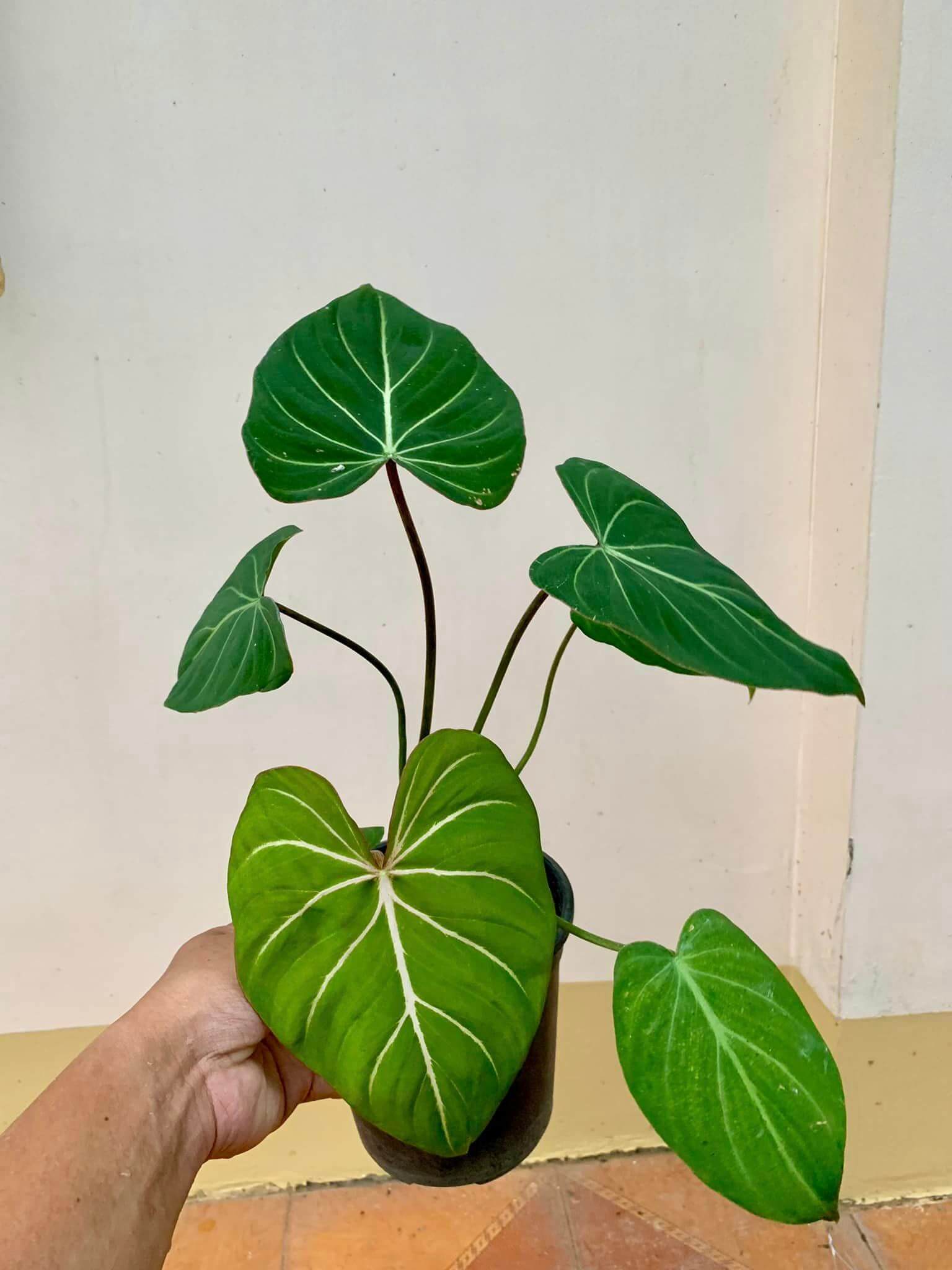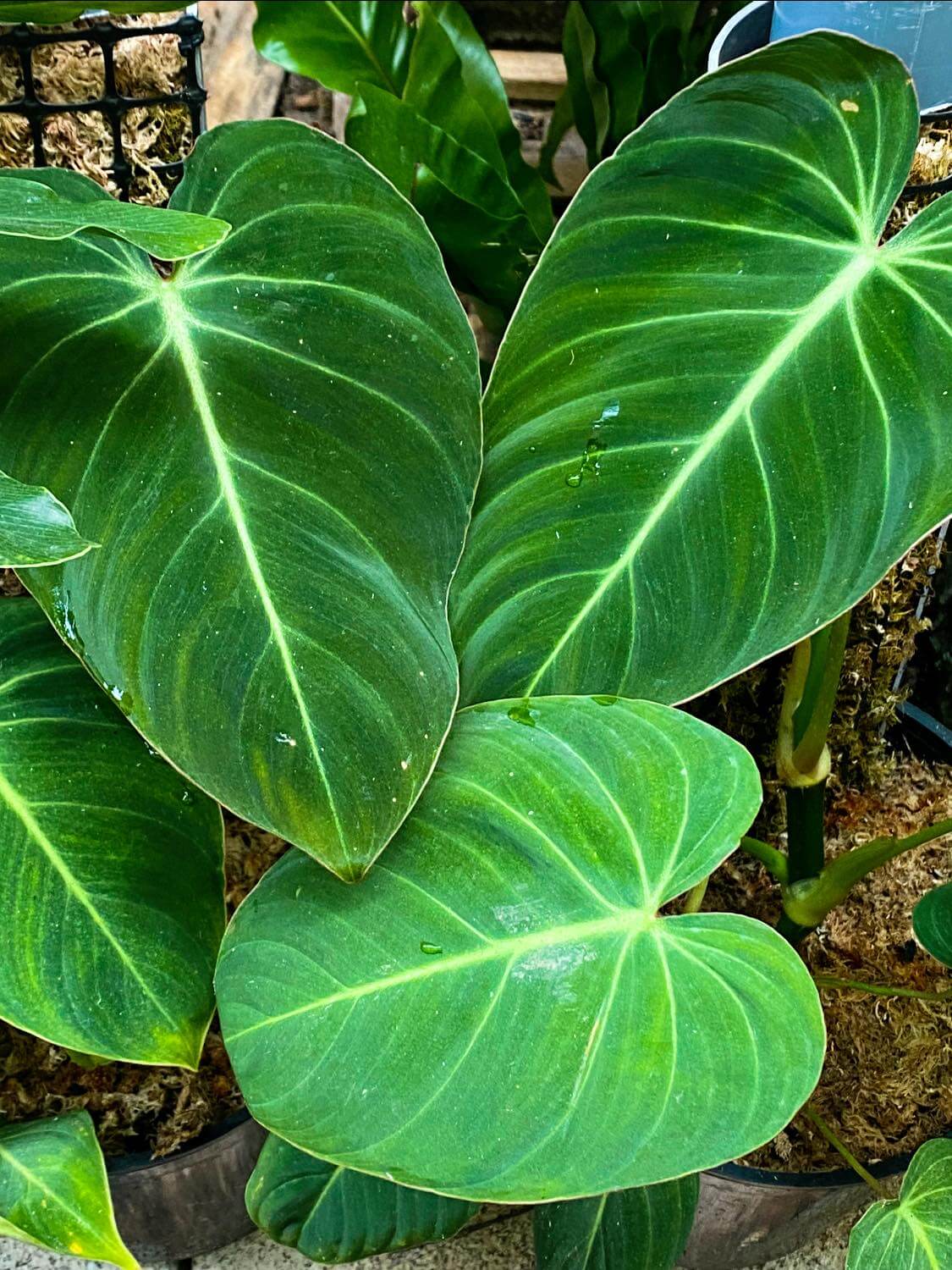Basic Information
Philodendron Gloriosum is a low-maintenance houseplant with large heart-shaped leaves that are green with white veins. It’s definitely worth waiting for the leaves to open as they are stunningly beautiful.



Light
Philodendron Gloriosum is a plant that thrives in bright, indirect light, such as the kind found in jungles. You can place it near a large window where sunlight streams through, but you should avoid direct sunlight to prevent leaf damage. The best location is an east-facing window or a spot that receives morning sun. If the light is too low, the plant might produce smaller leaves and leggy growth. On the other hand, too much direct sunlight can cause leaf browning and crispiness. By providing the right amount of light, you can enjoy lush, vividly colored leaves from your Gloriosum.
Water
The Gloriosum, like other Philodendrons, requires moist but not soggy soil. It would be best if you watered it when the top 1-2 inches of soil are almost dry, but this frequency should be adjusted with seasonal changes. Overwatering can lead to root rot, a common problem for this plant, so it’s best to use a pot with drainage holes to prevent water from pooling.
Soil
For the optimal growth of plants, the soil should fulfill specific requirements. It must be light, breathable, and slightly acidic, with good drainage. The recommended mixture of ingredients includes potting soil, perlite or orchid bark, and peat moss or coconut coir. Charcoal can also be added to absorb impurities and stabilize the soil’s pH level. The ideal pH range for the soil is between 6 and 7.5. It is important to avoid using succulent potting mixes as they tend to dry out too quickly, which can be harmful to the plants.
Temperature
The Philodendron Gloriosum thrives in warm conditions, with the ideal temperature range between 70-90 degrees F (21-32 degrees C). However, it can still tolerate temperatures above 60 degrees F (15 degrees C) during winter. The plant may enter a dormant phase in colder climates with little to no growth.
Humidity
This particular plant thrives in a humid environment, requiring between 60-80% humidity, higher than most households typically have. Consider using a humidifier or placing the pot on a pebble tray to increase humidity. Bathrooms can also be a great location due to their naturally higher humidity. Grouping your Philodendron with other plants can also help increase humidity levels, creating a moist environment similar to their natural habitat in the rainforest. Additionally, this technique can make your plants look fuller and more attractive.
Fertilizer
To ensure the good health of your Philodendron Gloriosum, it is advisable to fertilize it regularly with a balanced and nutritionally complete fertilizer. You can choose a liquid fertilizer with a 20-20-20 NPK formulation that is balanced. Dilute the fertilizer by half of the recommended amount and apply it once every month. It is important to follow the package instructions carefully. During autumn and winter, fertilize your plant every two months. Over or under-fertilizing may harm your plant, so be sure to follow the instructions on the product carefully.
Growth Rate
Philodendron Gloriosum is a slow-growing plant that may take around 1 to 2 months to produce a new leaf. Although leaves can grow up to 26 inches in their natural habitat, it typically reach 8 inches wide when grown indoors. The plant grows horizontally along the ground with a woody stolon from which the leaves emerge. Keep in mind that this plant requires patience, as it can reach a height of up to 90 cm.
Pet Safety
This plant is toxic to humans and pets, and can cause skin irritation or gastrointestinal distress if ingested. Keep it away from children and animals.
Grow in Semi-Hydro
- Philodendrons, celebrated for their lush foliage and adaptability, thrive in semi-hydroponic systems such as LECA/Pon, thanks to their resilient root systems and preference for consistent moisture.
- Shifting a Philodendron to a semi-hydroponic setting works well using a Nutrient Stagnant Wicking (NSW) method, providing a stable and effective environment for growth.
- Within the LECA/Pon environment, Philodendron roots adapt swiftly, effectively managing any early challenges in adapting to the NSW system.
- For nourishing Philodendrons in semi-hydro systems, a nutrient solution with a concentration around 800-1000ppm is optimal.
- Philodendrons are versatile in adapting to a range of temperature and humidity levels, making them ideal for various indoor settings.
- Regular care involves keeping an eye on the water level in the reservoir and periodically flushing the system to ensure the Philodendron’s healthy and consistent growth.
- If your Philodendron is a climber, it’s a must to look at our Moss Pole guide to have a proper set-up.
Tips
- Ensure your plant receives ample indirect sunlight; an east-facing window is ideal.
- Water the plant when the top layer of soil dries out, and avoid overwatering.
- Maintain high humidity around the plant using a humidifier or pebble tray.
- Use a well-draining soil mix, ideally with added charcoal for better growth.
- Fertilize regularly during the growing season but reduce in cooler months.
- Be patient, as this species is a slow grower, and it takes time for leaves to fully develop
Creating the right balance of care elements is essential to ensure the healthy growth and vibrant appearance of your Philodendron Gloriosum in an environment that mimics its natural tropical habitat.
Happy planting! 🌱


